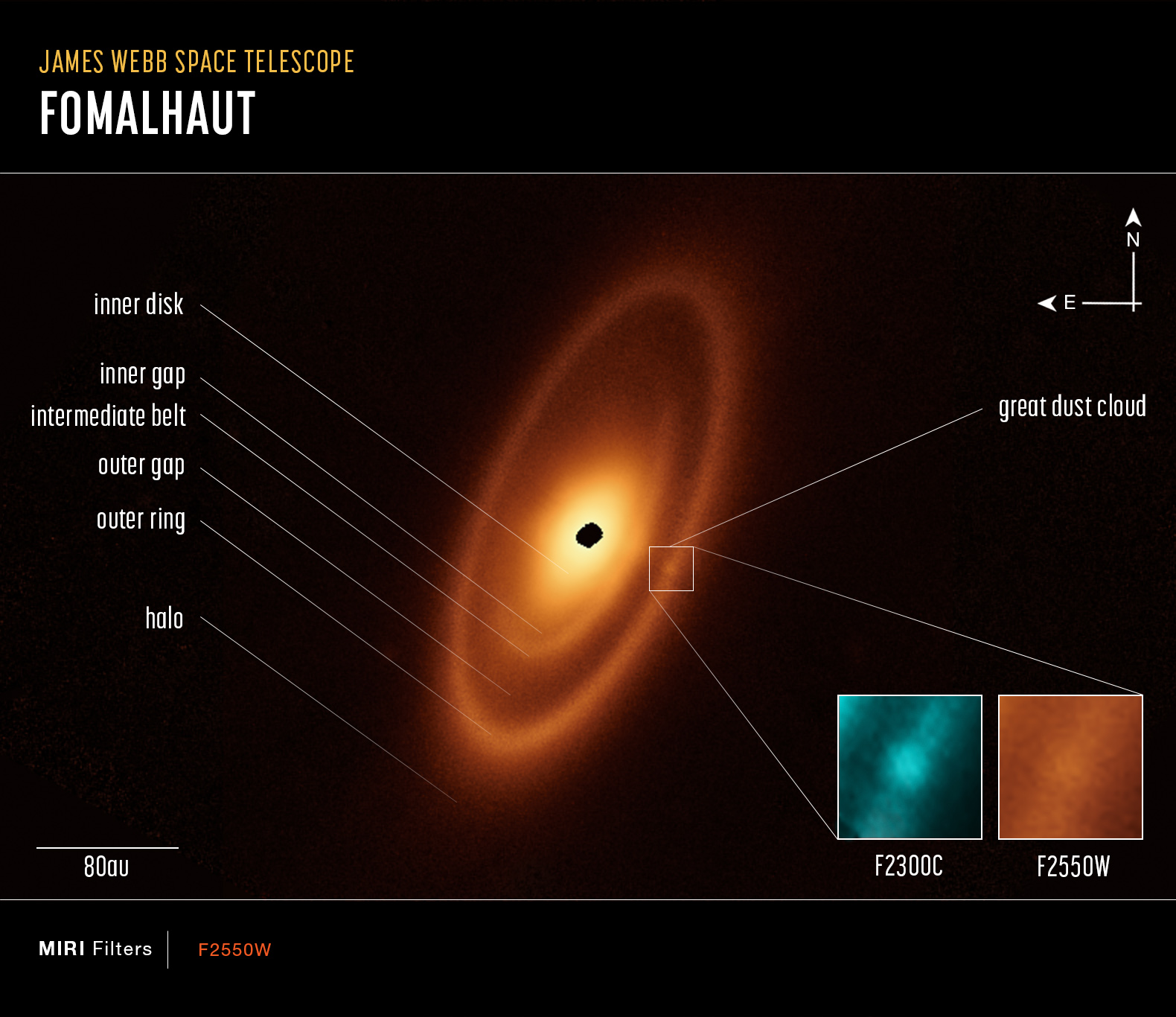James Webb has captured never-before-seen features around a star located just 25 light-years away from Earth. The star, which is surrounded by massive disks of dust was believed to be encircled by an asteroid belt. However, Webb’s observations of the star, which is known as Fomalhaut, show that the star is encircled by three asteroid belts.
What’s even more intriguing about these belts, though, is that they are far more complex than those found within our own solar system. Our solar system is home to asteroid belts like the Kuiper Belt, which is made up of small-body asteroids, and possibly even mini-planets. The existence of the outer belt was known, though it is twice as large as the Kuiper Belt. This is the first time we’ve observed the inner belts, though.
Webb’s observations and images of Fomalhaut have taught astronomers quite a bit about the young star, and the asteroid belts that surround it. The star is the brightest found in the southern constellation Piscis Austrinus, NASA says, and its dusty belts are made of debris from collisions of larger cosmic bodies.

These disks are commonly referred to as “debris disks”, and they make for asteroid belts with varying sizes of rocks and other debris moving throughout them. Astronomers say that you can sketch what the planetary system around Fomalhaut should look like if you take a deep enough picture of what they suspect were once planets.
Webb’s image of Fomalhaut is important because it gives us more depth to explore around the star. The debris fields we’ve spotted in the image are much bigger than previous observations ever showed. Both Hubble and ALMA have observed the star before, but they only imaged the outer asteroid belt.
Webb will allow astronomers to learn more about the inner parts of these systems, where hot gas resides. Combining that data with the data learned from Hubble and ALMA’s observations of the outer, cooler regions, and astronomers can finally paint a full picture of what the region around Fomalhaut looks like.
The belief is that astronomers can look deeper at the image of Fomalhaut that Webb captured, and discover gaps in the debris that could be planet-sized, allowing astronomers to get a better idea of what this star system should look like.








